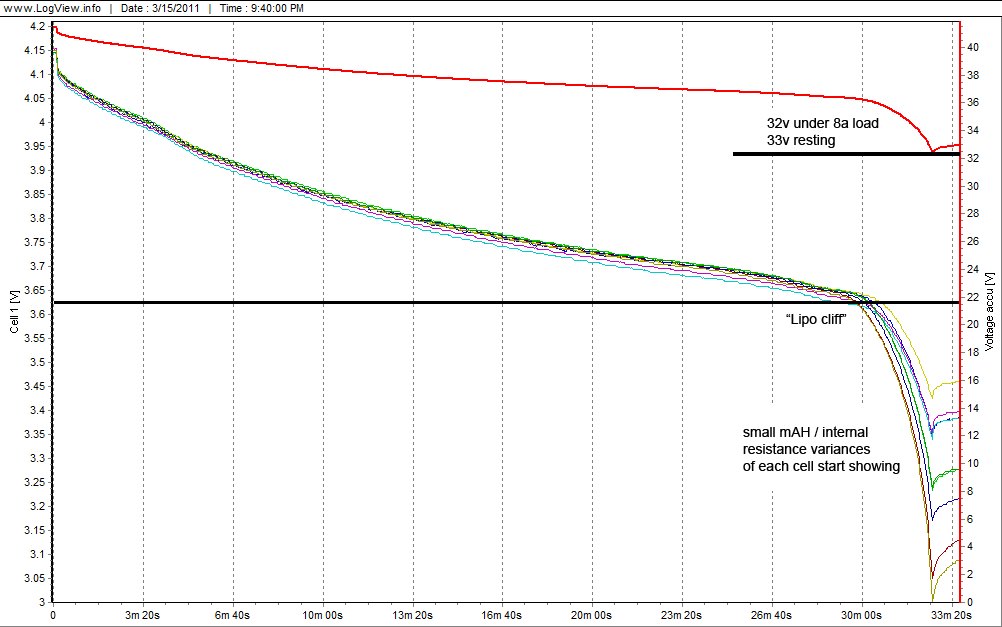retro
100 mW
- Joined
- Oct 6, 2009
- Messages
- 35
I've been running 5A5s Turnigy 20C lipos in parallel, then in series, 10A37V, for about 23 charges and today my iCharger discovered a weak cell.
My setup is: soldered the discharge leads in parallel and kept the balance plugs separate, so when I charge using a parallel board, two packs at a time, I have two balance taps plugged into the board and one discharge plug, plugged in. My first question is how would my charger note the individual cell voltages when in parallel? It only reads 5 cells, while 10 are actually being charged. I have always balance charged my packs and final voltage always showed 4.1 per cell, that's my limit. Today my charger wouldn't show anything except a "low voltage" warning, beep at me and nothing more I can do.
I separated the bad parallel pack and checked the voltage from the balance taps and there is one bad cell in each pack. Probably one bad cell which pulled its mate down with it. .83volt in one cell and 1.36volt in its mate. I know this is crazy bad and I have my CA shut off at 33 volts and never went below 30% capacity. I did actually get to that point one day, but never went beyond the 33 volts.
What are my options? Pull the packs apart and make one good battery out of the good cells? Is there any way to gently revive these cells or are they garbage?
And, is there anything I should have done to catch this before it happened or is this something that was out of my control?
My setup is: soldered the discharge leads in parallel and kept the balance plugs separate, so when I charge using a parallel board, two packs at a time, I have two balance taps plugged into the board and one discharge plug, plugged in. My first question is how would my charger note the individual cell voltages when in parallel? It only reads 5 cells, while 10 are actually being charged. I have always balance charged my packs and final voltage always showed 4.1 per cell, that's my limit. Today my charger wouldn't show anything except a "low voltage" warning, beep at me and nothing more I can do.
I separated the bad parallel pack and checked the voltage from the balance taps and there is one bad cell in each pack. Probably one bad cell which pulled its mate down with it. .83volt in one cell and 1.36volt in its mate. I know this is crazy bad and I have my CA shut off at 33 volts and never went below 30% capacity. I did actually get to that point one day, but never went beyond the 33 volts.
What are my options? Pull the packs apart and make one good battery out of the good cells? Is there any way to gently revive these cells or are they garbage?
And, is there anything I should have done to catch this before it happened or is this something that was out of my control?



